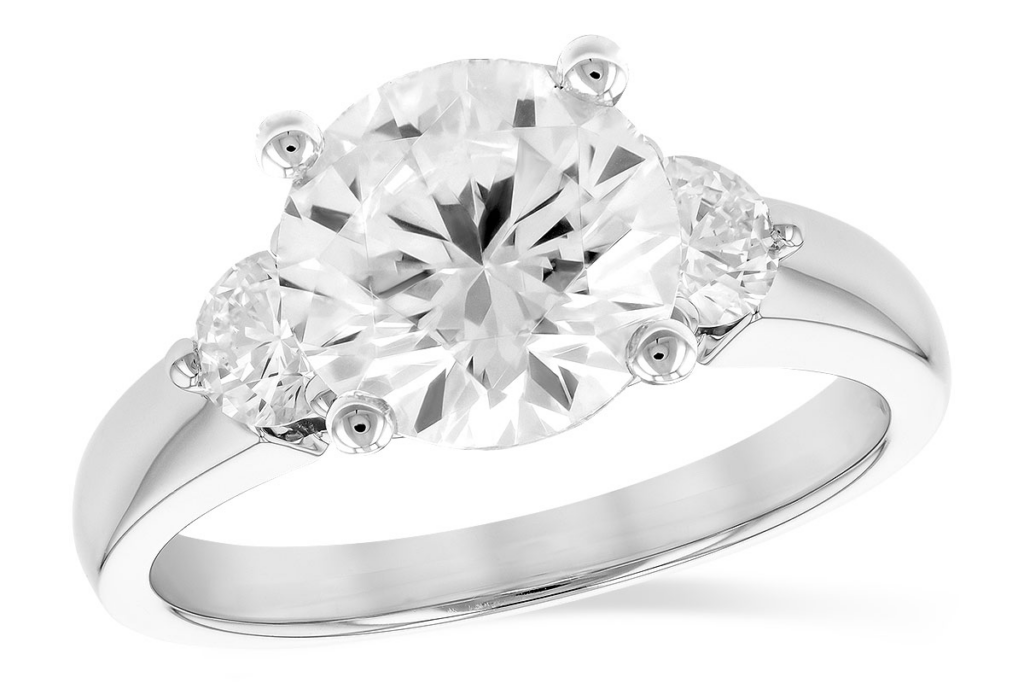Today, an engagement ring symbolizes a lifelong commitment to a partner. While engagement rings become popular in the 1940s, this tradition began back in ancient Egyptian times and traveled throughout most cultures as a symbol of never-ending love. Explore the evolution of the engagement ring and discover how it changed in shape and style while continuing to resemble a token of love for couples.
1500 to 1000 B.C. – Ancient Egypt
The ancient Egyptians first originated the engagement ring in 1500 B.C. Egyptians called engagement rings “the ring of love,” and would give it to their partners as a gift of devotion. To them, circles were a symbol of eternity, so rings symbolized their eternal love. The opening of the ring also represented a gateway to a world unknown.
Women would wear these rings on the third finger of their left hand since Egyptians believed this finger connected directly to their heart through the vena amoris vein. The signet was one of the most common types of rings, used in both Egyptian and Roman cultures, which sported a symbol of the royal family. Many Egyptian rings featured gorgeous carvings of various pictures or images, often of different gods.
500 B.C. – Ancient Rome
This tradition continued into Ancient Rome with a few changes in meaning and intentions. Men would forge rings from iron and would sometimes attach them to a small set of keys to indicate their ownership over the woman. The Romans made it more of a tradition to give engagement rings as a symbol of their intention to wed a woman.
Unlike Egyptians, Romans believed the fourth finger on the left hand was the one directly connecting to the heart, so that’s where the women wore it. These rings continued to sport designs related to Roman families and gods. The most popular images were designs of hands clasping in love or agreement, also known as a fede ring.
1200 to1300 – Medieval Times
In medieval times, people continued exchanging rings not just when they intended to marry someone, but also as a sign of faith, an amulet to cure illness, or simply as a gift. Throughout the Middle Ages, women would sometimes wear more than one ring on their finger because stacking rings from the fingertip down to the palm was a popular trend.
Fede rings were still a popular choice at this time. Others would try different decorations like lyres or doves as symbols of love and peace, beautifully carved onto gold bands. The tradition of decorated rings died down in the 1300s when leaders of the Christian church deemed these designs as heathenish, causing couples to exchange only plain gold bands.
1400s – First Appearance of the Diamond
The 1400s were when the diamond first appeared on a bride’s wedding band. When creating these diamond rings, ring makers would give them a pointcut design. People were particularly interested in diamonds because they showed endurance and strength, which is what many believed marriage should symbolize.
Mary of Burgundy and Archduke Maximillian of Austria first started the diamond-wearing trend. The Archduke hired makers to craft a ring made of gold with diamonds in the shape of an “M” on top of it as a dedication to his love and symbol for his lifelong commitment to her. This led others to see diamonds as a luxurious and glamorous fashion choice.
1700 – Posy Rings
Rings continued to develop as symbols of love in the 1700s, as couples would exchange rings as symbols of their loyalty to each other. They inscribed both the inside and outside of these rings with posies, which were short poems or popular sayings in Latin or French that expressed the partners’ love for each other. It was common to include stones or jewels on posy rings, but makers would place them on the inside of the band so only the wearer could see it.
1800s – Rise of Rose-Cut Diamonds
As diamonds evolved, ring makers developed unique formations and variations of them, like rose-cut diamonds, which were popular in the 1800s. Hand designs increased in popularity once again, with pictures of clasping hands and hearts featured on the band of rings. Some would even include designs of two hands holding a heart.
It wasn’t simple to buy diamond rings since they weren’t available at most jewelry stores until 1888, when the De Beers Mining Company discovered troves of diamonds in South Africa. This made diamond rings more easily accessible, and it led to diamond cutters advancing their skills to make more beautiful round diamond cuts that impressed many soon-to-be brides.
1900s – Popularity of More Metals
Up until the 1900s, almost everyone used gold as their primary metal when making an engagement ring band, until they realized how visually appealing platinum and white gold were. Ring makers realized how well white metals brought out the shimmering white tones in a diamond. With the introduction of white gold and platinum paired with a prominent diamond, engagement rings began to stand out more from cocktail and everyday rings.
Today, gold, silver, and platinum are not the only metals available in wedding bands and engagement rings. Other metals such as titanium, cobalt, stainless steel, and tungsten are getting popular amongst millennials.
1947 – “A Diamond is Forever”
In 1947, De Beers Mining Company advertised diamonds more toward men looking for the perfect ring for their fiancée. They came up with the infamous campaign slogan “A Diamond is Forever.” This explained to their audience that even when a diamond is discolored, chipped, shattered, or destroyed, it still signified eternity, companionship, and endless love. This caused wholesale diamond prices to soar over the next few years.
Engagement Rings Today

The history of engagement rings is indeed colorful, from Egypt rings, to renaissance rings, to the current styles we see now.
While engagement rings have changed in style since they were first created, they haven’t strayed far from their original meaning of love, commitment, and sacrifice. Engagement rings today all have unique, customizable shapes with high-quality diamonds with styles like heart, princess, round, and radiant cuts. Diamond engagement rings also vary in color and the number of carats, which is the measure of the diamond’s weight.
There are numerous engagement designs available to meet any bride’s personal style. Give us a call or stop by Wulf Diamond Jewelers and let our expert team help you choose the perfect ring for your soon-to-be fiancée today.



